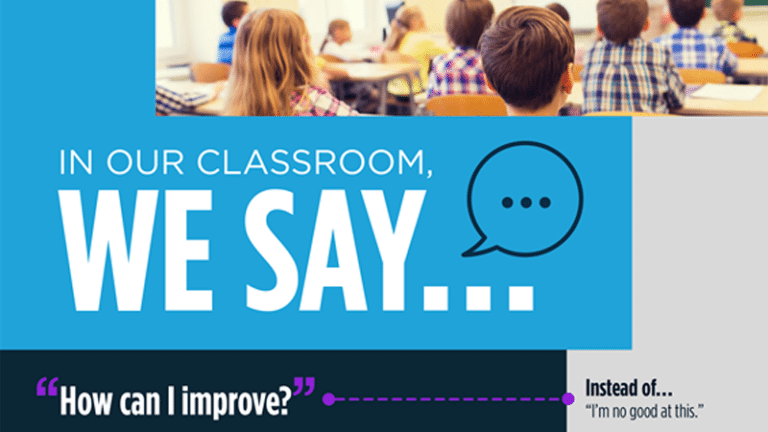Looking for ways to help kids embrace their mistakes and keep working toward success? Growth mindset activities could be the answer. This concept may not be a miracle cure for all students. But many educators find it helpful in reminding kids that even though they’re struggling to do something now, it doesn’t mean that will always be the case. Here are some ways to open their minds to the idea that they really can learn new things, and that the effort is just as important as the achievement.
What is a growth mindset?

(Want a free copy of this poster? Click here!)
Psychologist Carol Dweck made the idea of fixed vs. growth mindsets famous with her book Mindset: The New Psychology of Success. Through extensive research, she found that there are two common mindsets, or ways of thinking:
- Fixed mindset: People with a fixed mindset feel that their abilities are what they are and cannot be changed. For instance, a person may believe that they’re bad at math, so they don’t bother to try. Conversely, a person may feel that because they’re smart, they don’t need to work very hard. In either case, when a person fails at something, they simply give up.
- Growth mindset: Those with this mindset believe that they can always learn new things if they make enough effort. They embrace their mistakes, learning from them and trying new ideas instead.
Dweck found that successful people are those who embrace a growth mindset. Though we all alternate between the two at times, focusing on a growth-oriented way of thought and behavior helps people adapt and change when needed. Instead of thinking “I can’t do this,” these people say, “I can’t do this YET.”
Growth mindset is key for learners. They must be open to new ideas and processes and believe they can learn anything with enough effort. Teach kids to make this mindset their default with classroom growth mindset activities like these.
Our Favorite Growth Mindset Activities
1. Read a growth mindset book
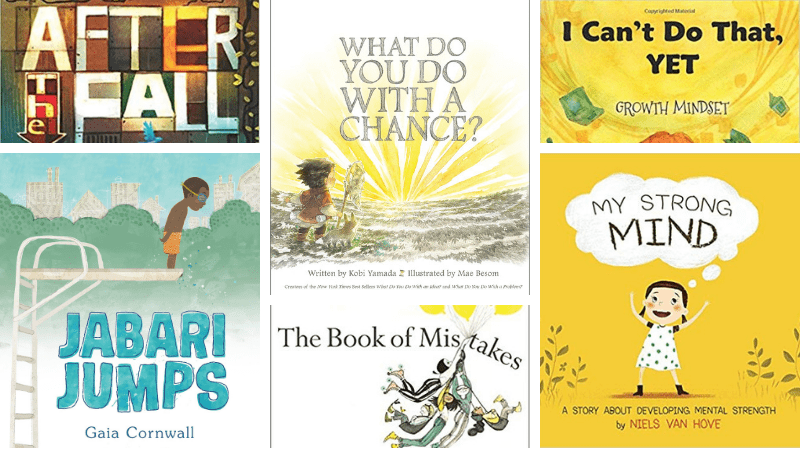
These read-alouds are perfect for story time, but don’t be afraid to try them with older students too. In fact, picture books can spark all sorts of interesting conversations among high schoolers!
Learn more: 18 Perfect Read-Alouds for Teaching Growth Mindset
2. Fold an origami penguin

This is such a cool way to introduce the idea of a growth mindset. Start by asking kids to fold an origami penguin, with no instructions at all. Talk about their frustrations, then give them the chance to follow instructions and ask for help. Kids will realize that learning to do something is a process, and you have to be open to trying.
Source: Origami Penguins at Little Yellow Star
3. Watch a growth mindset TED Talk
Let a real growth mindset expert (who also happens to be a fellow kid!) inspire your students. When Rebecca’s mom forced her to join student council, she turned her anger into a growth mindset instead.
4. Learn growth mindset words

Introduce important growth mindset concepts like creativity, mistakes, risks, persistence, and more. Ask students to share what they already know about these terms by writing thoughts on a poster. Hang these in your classroom as a reminder throughout the year.
Learn more: Growth Mindset Words at Create Dream Explore
5. Focus on praising the process instead of the person

When you praise a person, you’re praising traits. When you praise their process, you show that you value their actions and efforts, which encourages them to keep trying even when things are difficult.
Learn more: Person vs. Process Praise at Mrs. Winter’s Bliss
6. Review growth mindset examples
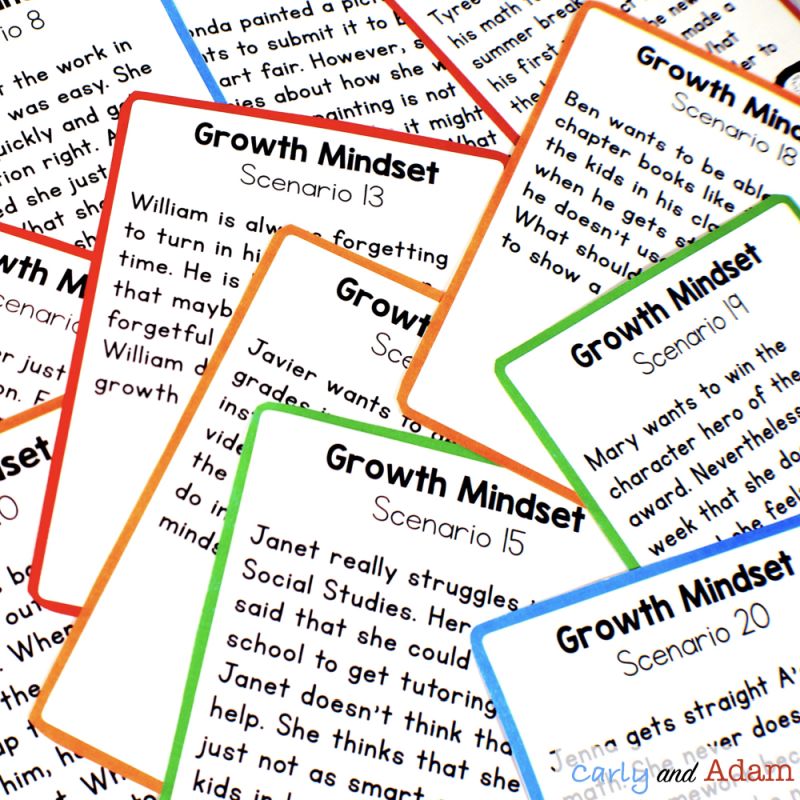
Seeing growth and fixed mindsets in action can make it easier to understand the difference between the two. Buy a set of cards to share with students at the link, or have kids write their own scenarios and challenge each other.
Learn more: Growth Mindset Examples at Carly and Adam
7. Compare fixed and growth mindsets

Show students examples of fixed mindset statements, and compare them with more growth-oriented examples. When students use a fixed mindset phrase, ask them to restate it from a growth standpoint instead.
Learn more: Comparing Growth vs. Fixed Mindset at Rainbow Sky Creations
8. Change your words, change your mindset
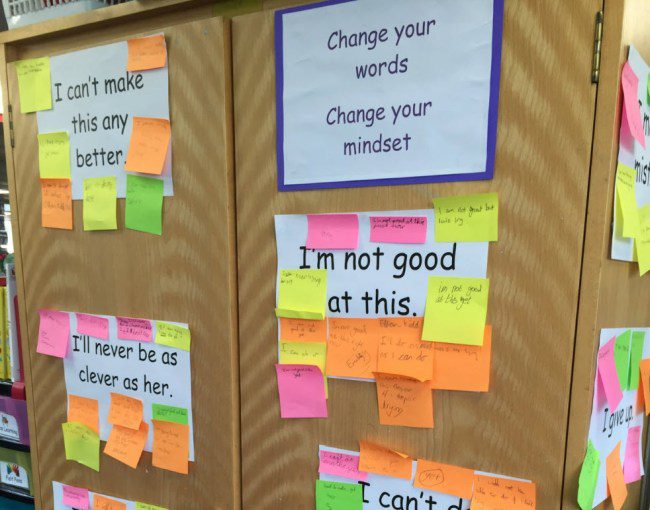
The things we say to ourselves are just as important as the efforts we make. Give kids sticky notes and have them brainstorm growth mindset alternatives to fixed mindset phrases.
Learn more: Change Your Words at Making Learning Super
9. Make cootie catchers
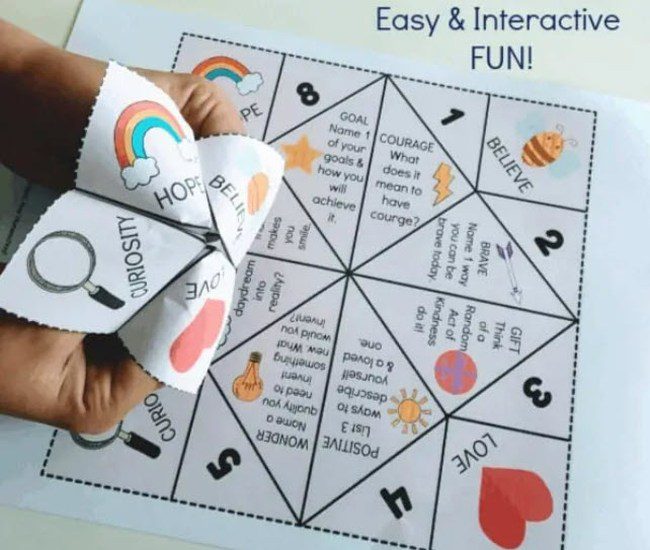
Kids always love these little foldable doodads. But they aren’t just fun to play with—they also make fantastic growth mindset activities. Grab two free printables at the link, and as kids fold, talk about what it means to have a growth mindset.
Learn more: Growth Mindset Cootie Catcher at Rock Your Homeschool
10. Roll a conversation die
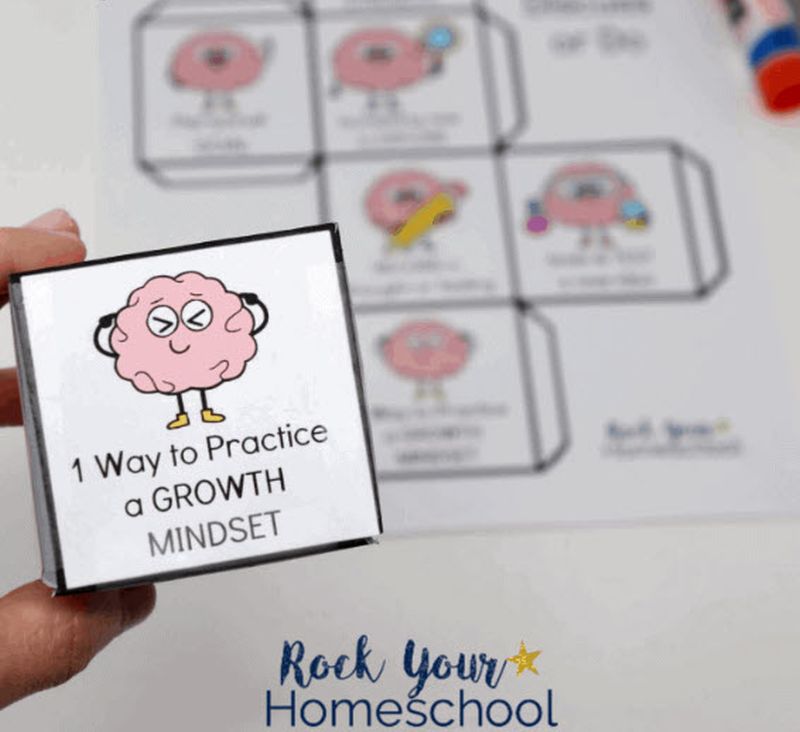
This printable conversation die asks players to state a personal goal, personal strength, way to practice a growth mindset, and more. It’s a simple way to get kids thinking, talking, and sharing.
Learn more: Conversation Die at Rock Your Homeschool
11. Discover neuroplasticity
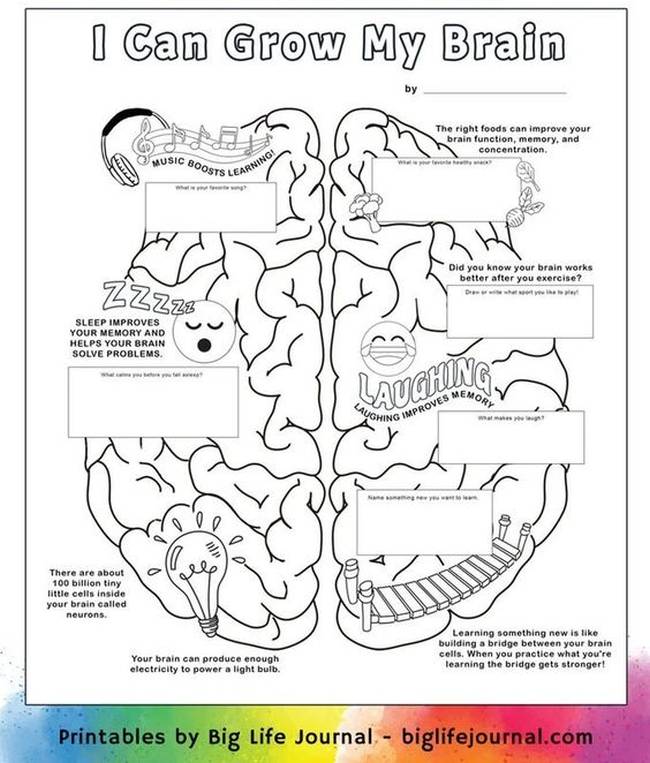
That very big word simply means that our brains continue to grow and change throughout our whole lives. In fact, they get stronger the more we use them! This is the science behind the growth mindset, explaining why it really does work.
Learn more: Neuroplasticity at Big Life Journal
12. Keep a growth mindset journal
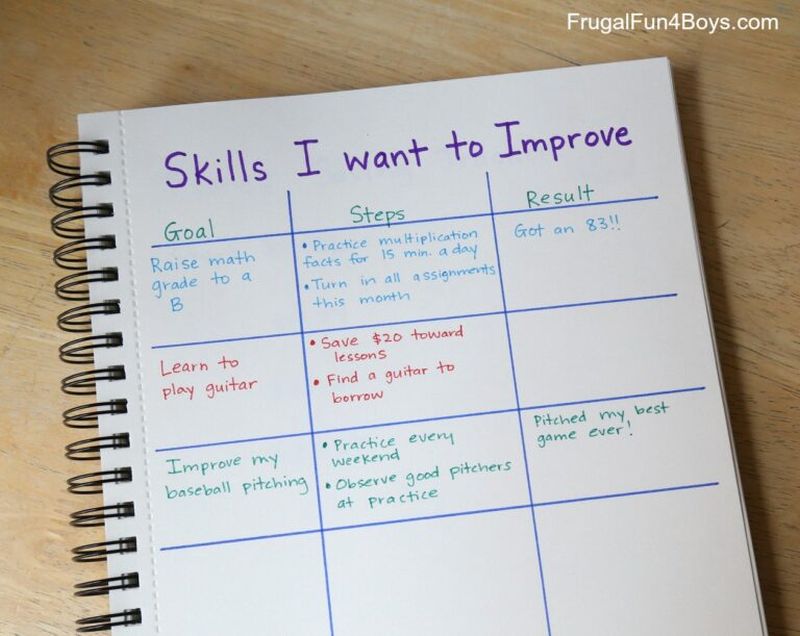
Use a bullet journal or more traditional style to reflect on personal goals and your progress toward them. (Learn more about the benefits of journaling here.)
Learn more: Growth Mindset Journal Ideas at Frugal Fun for Boys and Girls
13. Embrace the power of “yet”

When you add “yet” to a fixed mindset statement, it can really change the game! Ask students to list some things they can’t do yet, and revisit the list from time to time to see what they’ve accomplished.
Learn more: The Power of Yet at The Brown Bag Teacher
14. Work together in an escape room
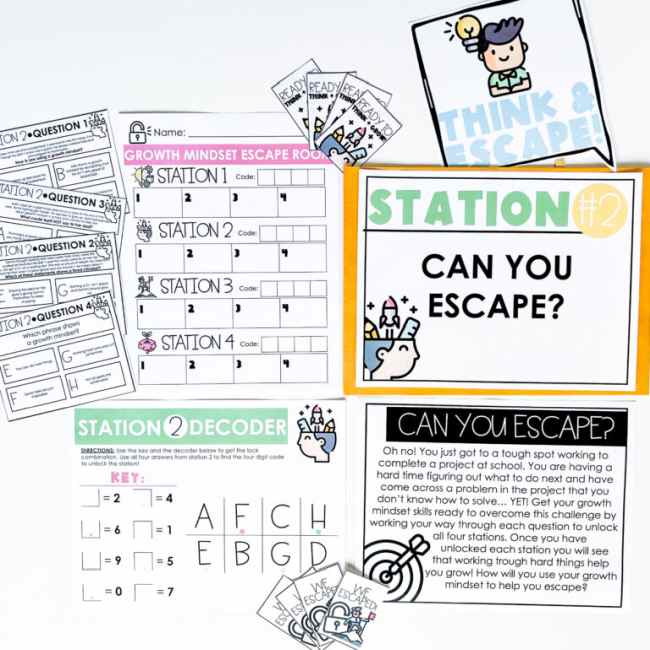
Any escape room activity can encourage students to try new ideas and work together to figure out the answers. If you’d like one specifically geared toward growth mindset, visit the link for a ready-to-go option.
Learn more: Growth Mindset Escape Room at Teach Create Motivate
15. Flip that flop!

Learning that it’s OK to make mistakes is a huge part of growth-oriented thinking. Help kids recognize that and learn how to flip their flops with this fun, free printable activity.
Learn more: Flip That Flop at Keep ’Em Thinking
16. Lift a growth mindset barbell
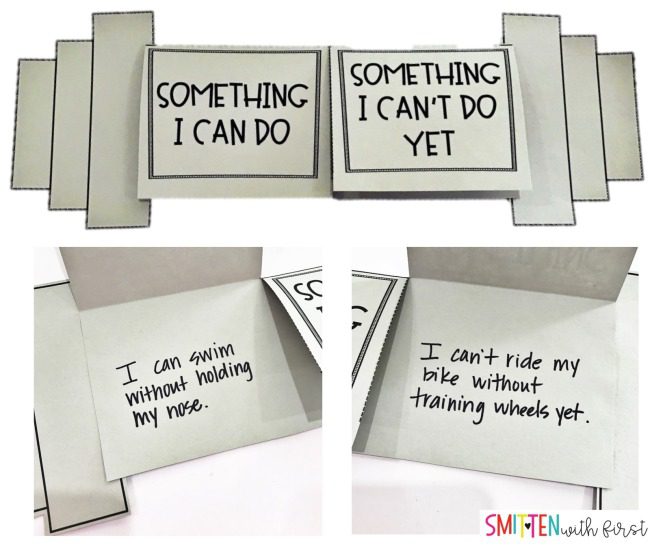
This cute craft encourages kids to think of things they can already do and things they can’t do yet. It makes a connection between working out to strengthen your body and thinking to strengthen your brain.
Learn more: Growth Mindset Barbell at Smitten With First
17. Sing “Everyone Makes Mistakes”
This Sesame Street ditty became an instant classic for a reason. Big Bird’s sweet tune reminds us that everyone makes mistakes, and the important part is to just keep trying.
18. Seek out famous failures

So many famous people only accomplished their dreams after many years of trying. Share some famous failures with your students (see examples at the link), then have them round up more famous failure stories on their own.
Learn more: Famous Failures Bulletin Board at Laura Randazzo
19. Analyze your errors

Mistakes are OK, but only because we can learn from them. When students get the answer wrong or aren’t able to do something they want or need to do, encourage them to look back at their errors. Reflect on what went wrong, and use that knowledge to try again.
Learn more: Error Analysis at Ashleigh’s Education Journey
20. Use growth mindset exit tickets

At the end of a lesson or day, have students complete these exit tickets that double as growth mindset activities. They’ll reflect on what inspired them, what challenged them, and when perseverance paid off.
Learn more: Growth Mindset Exit Tickets at Tales From a Very Busy Teacher
21. Craft a class slogan

Put students into small groups to come up with a potential growth mindset slogan for the class. Bring everyone back together to look over the options, and work to combine them into one slogan that inspires everyone.
Learn more: Growth Mindset Slogan at Mandy Neal: Teaching With Simplicity
22. Glow and grow
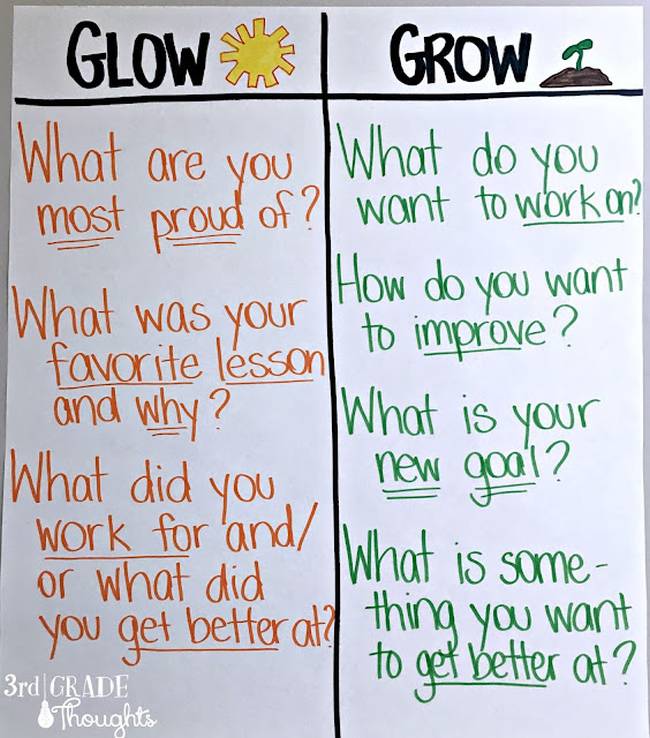
Celebrating the efforts that lead to accomplishments is a key part of a growth mindset. Use this chart to encourage kids to recognize their “glowing” moments and set goals for “growing” moments.
Source: Glow and Grow at 3rd Grade Thoughts
23. Color some inspirational quotes
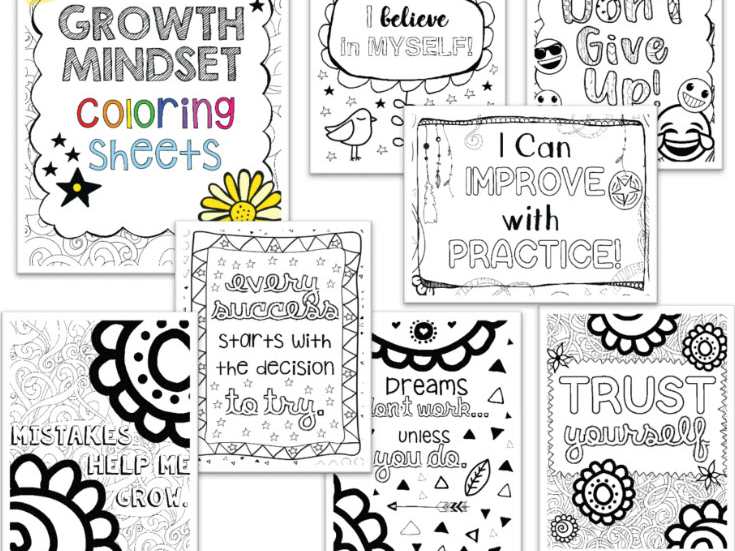
Coloring is a calming, reflective activity for many people. Give kids some of these pages to decorate, or check out our list of growth mindset quotes and let them pick out their own to illustrate.
Learn more: Growth Mindset Coloring Pages at A Grace-Filled Classroom
24. Experiment with coding and robotics

When students learn to code, “What if we try this?” becomes their go-to phrase. As you give your students the time they need to discover what works, the reward is in the process. Student coders become master revisionists, which allows them to deepen creativity to find success.
Learn more: 5 Ways Coding and Robotics Build a Growth Mindset in Your Students
25. Let families inspire their kids
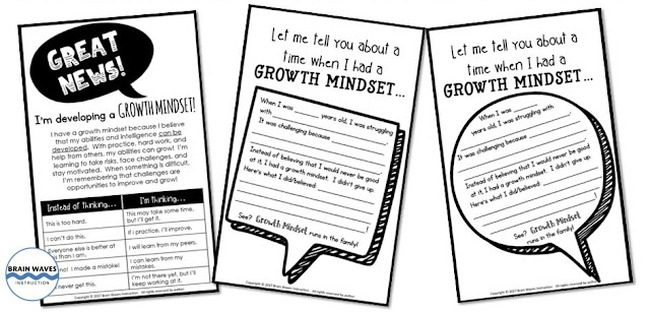
This is such a cool idea for open house or even parent-teacher conferences. Share these free handouts with families, and encourage them to write about the times in their own lives when a growth mindset made a real difference.
Learn more: Growth Mindset Family Project at Brain Waves Instruction
What are your favorite growth mindset activities? Come share your ideas and ask for advice in the We Are Teachers HELPLINE group on Facebook.
Plus, check out Free Growth Mindset Posters To Bring More Positivity to Your Classroom.


